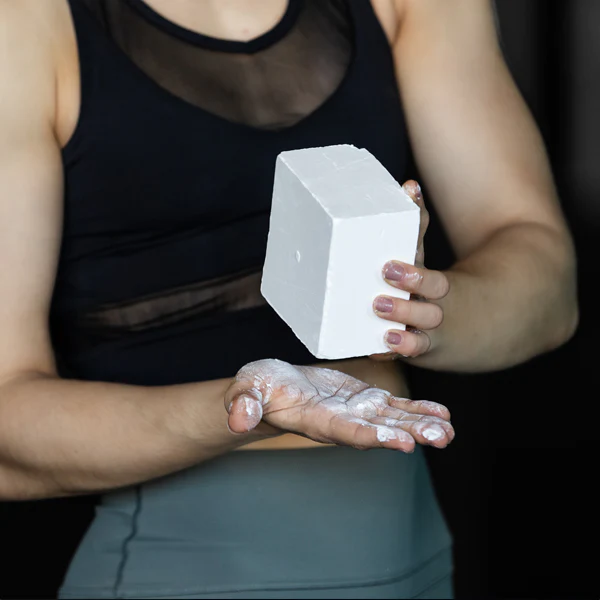When it comes to maximizing your performance in the gym, a solid grip can make all the difference. Chalk has long been a go-to tool for athletes and fitness enthusiasts to enhance their grip during weightlifting, calisthenics, and various other activities. In recent years, there’s been a rise in popularity of both liquid chalk and traditional dry chalk. In this blog post, we’ll explore the pros and cons of each, helping you decide which chalk variant might be the perfect fit for your gym training needs.
Dry Chalk: The Classic Grip Enhancer
Dry chalk, in its traditional powdered form, has been a staple in gyms and sports facilities for decades. Made from magnesium carbonate, dry chalk helps absorb moisture from the hands, providing a dry surface and reducing slippage during exercises.
Pros of Dry Chalk:
- Effective Grip Enhancement: Dry chalk is renowned for its ability to provide a reliable and instant increase in grip strength.
- Cost-Effective: Dry chalk is often more affordable than its liquid counterpart, making it a budget-friendly option for many athletes.
- Ease of Application: Applying dry chalk is a straightforward process – simply rub it on your hands, and you’re ready to go.
Cons of Dry Chalk:
- Messy Application: Dry chalk can create a mess, both on your hands and in the gym environment.
- Limited Duration: The effects of dry chalk may wear off relatively quickly, requiring reapplication during longer workout sessions.
Liquid Chalk: The Modern Solution
Liquid chalk is a newer alternative that addresses some of the challenges associated with dry chalk. It typically consists of a suspension of magnesium carbonate in alcohol, providing a convenient and mess-free application.
Pros of Liquid Chalk:
- Clean Application: Liquid chalk dries quickly, leaving minimal residue on hands and equipment, making it a cleaner option.
- Longer Lasting Grip: The liquid form tends to provide a longer-lasting grip compared to traditional chalk, requiring less frequent reapplication.
- Portable: Liquid chalk is often available in compact, easy-to-carry bottles, making it convenient for on-the-go athletes.
Cons of Liquid Chalk:
- Cost: Liquid chalk can be more expensive than dry chalk, which may impact budget-conscious individuals.
- Drying Time: While it dries relatively quickly, some users may prefer the instant dryness offered by traditional chalk.
Buy Our Favorite Liquid Chalk Here!
Buy Our Favorite Dry Chalk Here!

Ultimately, the choice between liquid chalk and dry chalk comes down to personal preference, convenience, and budget considerations. Both options effectively enhance grip strength and reduce slippage during workouts. If you prioritize cleanliness, portability, and a longer-lasting grip, liquid chalk might be your ideal choice. On the other hand, if you’re looking for a cost-effective, classic solution with instant grip enhancement, traditional dry chalk remains a reliable option. Experiment with both to see which suits your needs and enhances your gym training experience. After all, a secure grip lays the foundation for lifting success.
